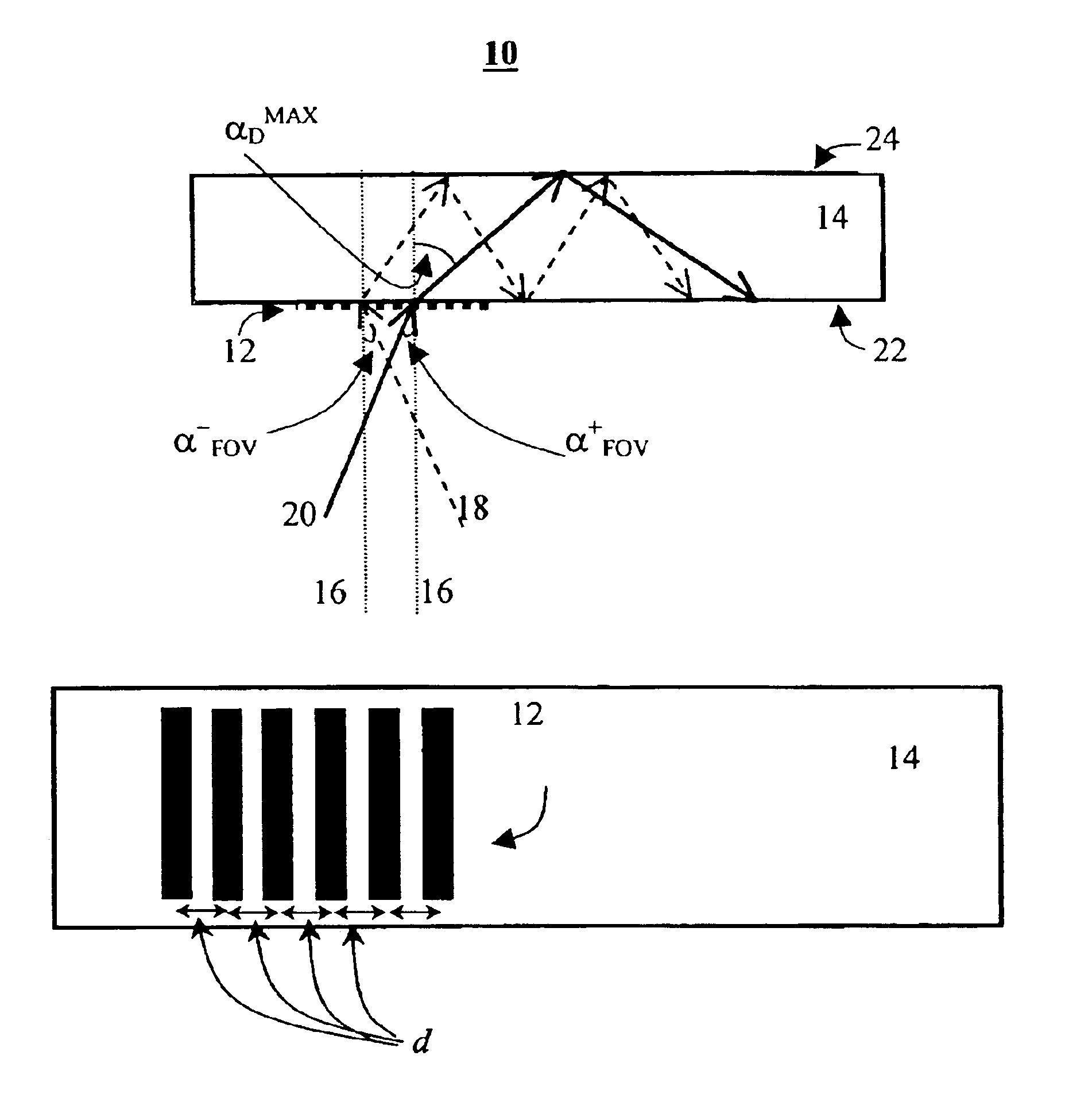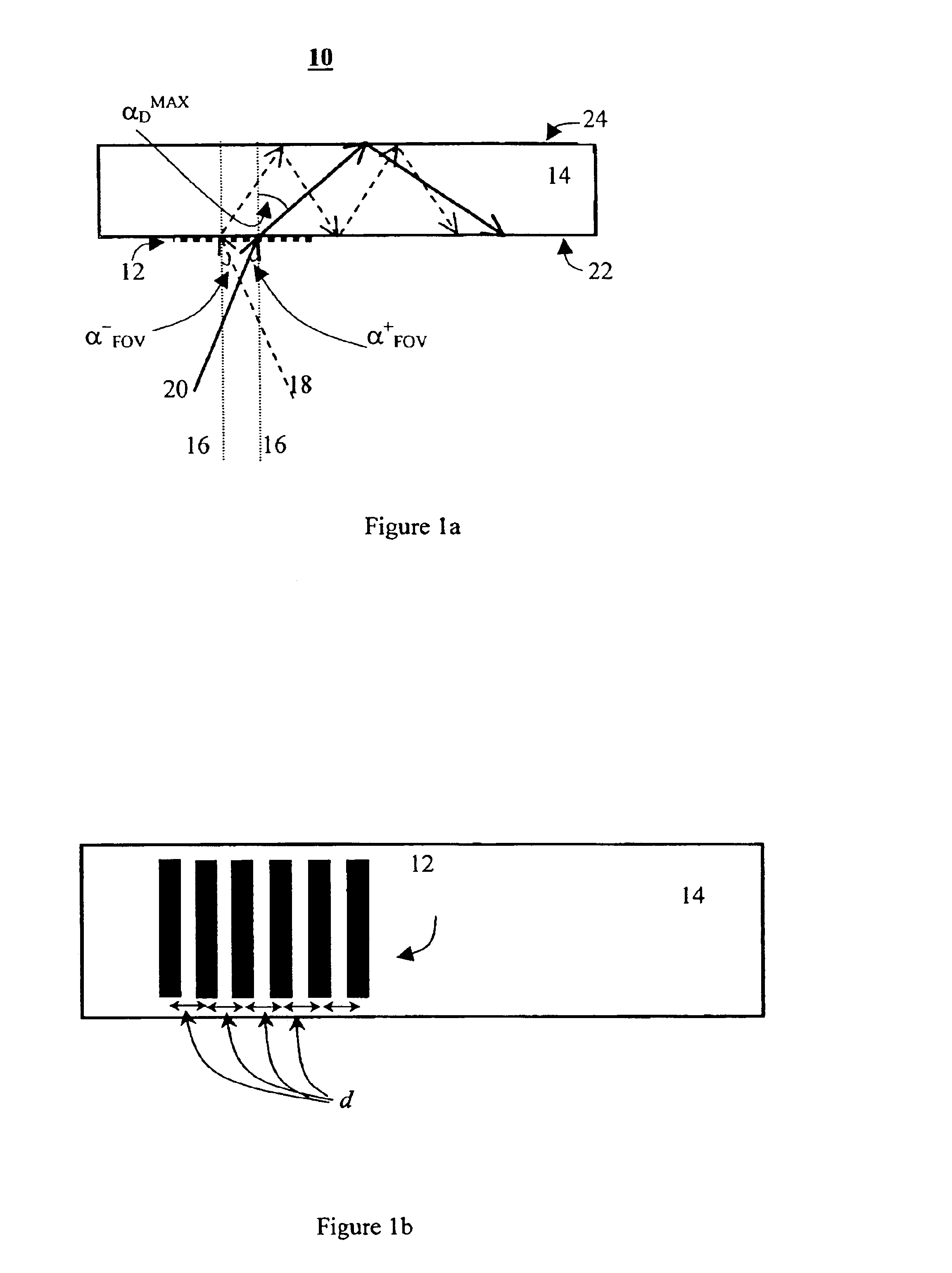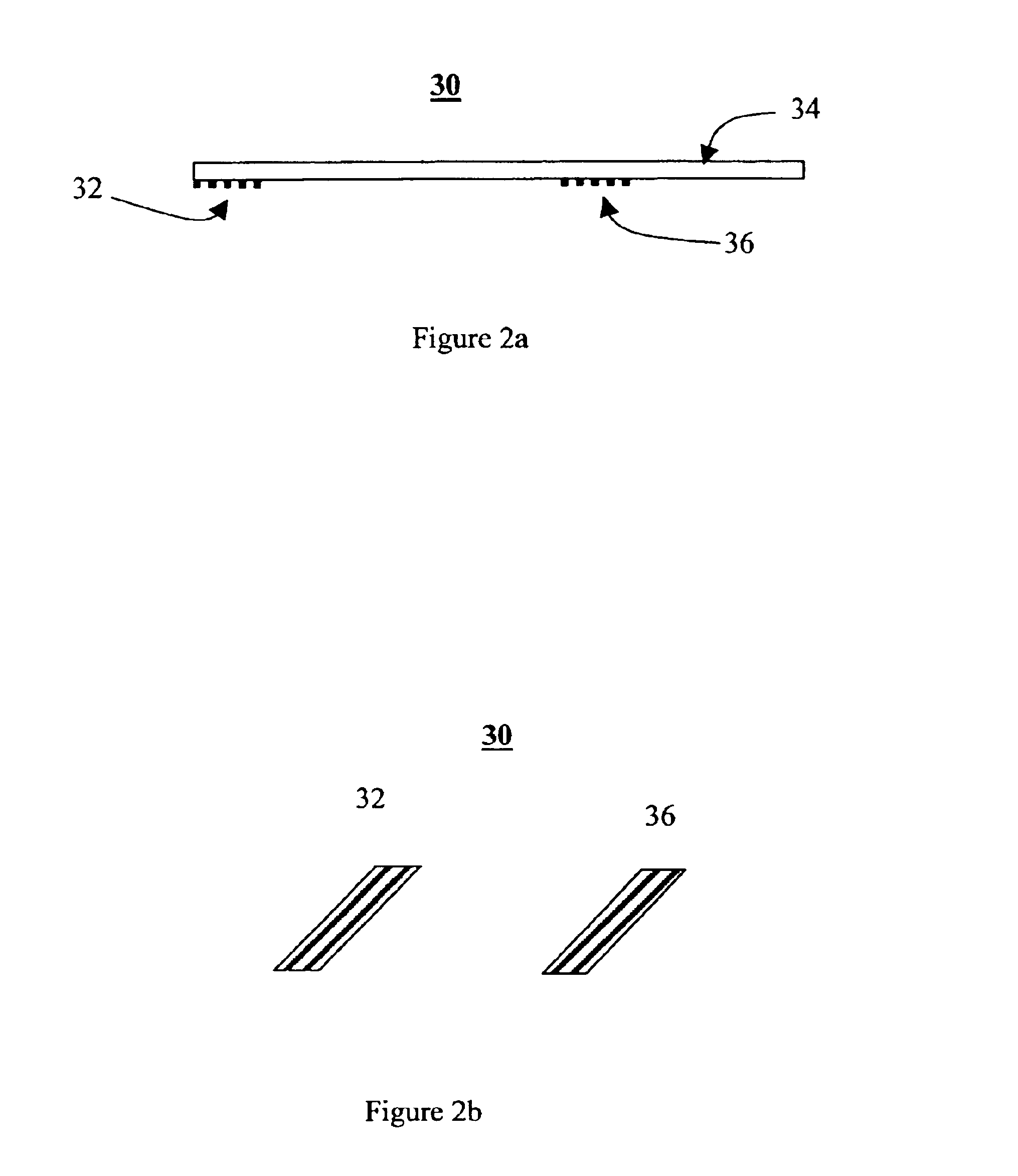Optical device having a wide field-of-view for multicolor images
a multi-color image and optical device technology, applied in the field of optical devices having a wide field-of-view for multi-color images, can solve the problems of not being able to easily miniaturize, heavy, bulky, etc., and achieve the limitation of the ability to provide sufficient information to the user, heavy weight of the crt display, and the effect of reducing the size of the active matrix panel
- Summary
- Abstract
- Description
- Claims
- Application Information
AI Technical Summary
Benefits of technology
Problems solved by technology
Method used
Image
Examples
example 1
Determination of the Grating Pitch
As already stated, the grating pitch, d, depends on the required field-of-view and the wavelength of the light and independent of the index of refraction of the substrate, or any other dimensional parameter of the substrate, and it is conveniently determined from the formula d=.lambda..sub.B / (1-n.sub.A sin .alpha..sup.-.sub.FOV). In the following, n.sub.A is taken to be a unity.
For example, if the shortest wavelength in the spectrum corresponds to a blue light, e.g., .lambda..sub.B =480 nm, than for a first field-of-view angle of .alpha..sup.-.sub.FOV =-8.degree., the grating pitch should be d=421 nm, and for a larger first field-of-view angle of .alpha..sup.-.sub.FOV =-14.degree., the grating pitch should be d=386 nm.
example 2
Determination of the Minimal Refraction Index
The minimal index of refraction can be determined, as detailed above from the formula n.sub.MIN =(.lambda..sub.R / d-n.sub.A sin .alpha..sup.-.sub.FOV) / sin .alpha..sup.MAX.sub.D, where the maximal diffraction angle can be determined according to additional considerations, such as the "flat" embodiment and the "at least one hop" embodiment. Again, n.sub.A is taken to be a unity.
"Flat" Embodiment
According to the "flat" embodiment, it is required that all the diffraction angles would be below a predetermined angle. The present example corresponds to a maximal diffraction angle of 80 degrees.
Hence, if the spectrum ranges from a blue light (.lambda..sub.B =480 nm) to a red light (.lambda..sub.R =620 nm), than for field-of-view angles of .alpha..sup..+-..sub.FOV =.+-.14.degree., the minimal index of refraction is n.sub.MIN =1.877. An appropriate light-transmissive substrate is, for example a glass type SF 66 purchased from Schott Glas, Germany f...
PUM
 Login to View More
Login to View More Abstract
Description
Claims
Application Information
 Login to View More
Login to View More - R&D
- Intellectual Property
- Life Sciences
- Materials
- Tech Scout
- Unparalleled Data Quality
- Higher Quality Content
- 60% Fewer Hallucinations
Browse by: Latest US Patents, China's latest patents, Technical Efficacy Thesaurus, Application Domain, Technology Topic, Popular Technical Reports.
© 2025 PatSnap. All rights reserved.Legal|Privacy policy|Modern Slavery Act Transparency Statement|Sitemap|About US| Contact US: help@patsnap.com



